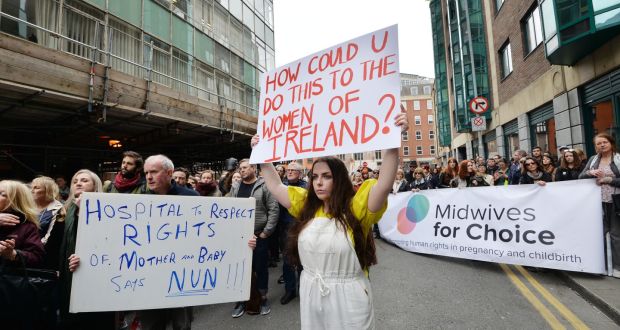Why Will the Sisters of Charity Own the New Maternity Hospital?
By Paul Cullen
I’ve read the State is going to hand ownership of the new ˆ300-million National Maternity Hospital (NMH) to the Sisters of Charity when it is moved from Holles Street to St Vincent’s. What is going on? The Holles Street building is dilapidated and the maternity hospital urgently needs new premises. So it is moving to St Vincent’s, where it will be run by an independent company. However, this company will be owned by the St Vincent’s Healthcare Group, whose sole shareholders are the Sisters of Charity. So the nuns, who own the land, will also own the new building. Why is this being done? It was part of a deal finalised last November to settle a row between the NMH and St Vincent’s over control of the new hospital. While the company set up to run it will be owned by St Vincent’s, the hospital will enjoy clinical and operational independence, both sides agreed at the time. The existing role of master of the NMH is being retained under the new set-up. The autonomy of the maternity hospital will be underpinned by “reserved powers” that only the Minister for Health can amend, and the Minister will hold a “golden share”. The nominees of the NMH or St Vincent’s will also be able to consult the Minister on any operational matter about which they feel “aggrieved”. The agreement setting out the new arrangements was not published so there has not been complete public clarity about the reserved powers and the golden share. Of the nine directors of the company set up to run the hospital, only four will be nominated by St Vincent’s. Four will be nominated by the NMH and the remaining member will be an independent expert. The current master of the NMH, Dr Rhona Mahony, has described these arrangements as a “triple lock to guarantee absolute autonomy and independence of the clinical services we deliver”. The chairman of the NMH, retired judge Nicholas Kearns, has said the arrangements are “legally water-tight and sound”. So Holles Street is happy with the move to St Vincent’s as proposed? That is the official line, but former master of the hospital, Dr Peter Boylan, is highly critical of the ownership arrangements proposed. Dr Boylan is chairman of the Institute of Obstetricians so his view carries weight. Yet the very fact so many protections have been put in place must show there were concerns. Are they justified? Maternity care is an area of medicine where many ethical issues arise and there is often a divide between Catholic thinking and secular views. Abortion is the obvious area of contention, but not the only one. Infertility treatment and gender realignment are others. Critics of the proposed arrangement worry women might be deprived of services due to the Catholic ethos at St Vincent’s. And are those fears justified? One might need a crystal ball for that. What we do know is that the board of St Vincent’s runs its affairs “in accordance with the principles and ethics of the Congregation of the Religious Sisters of Charity”. It is subject to “such directions, if any, that may be given from time to time by the Provincial Superior” of the order and it must act in accordance with the healthcare philosophy and ethical code of the order. Two members of the order sit on the board of St Vincent’s. In terms of everyday services, for example, St Vincent’s does not offer treatments such as elective sterilisations that are provided in most HSE-funded hospitals. Yet gynaecologists from Holles Street frequently work clinics in St Vincent’s as well without issues arising. How is the NMH run currently? And how would that change when it moves? There are, ironically, more members of the religious on the board of governors of the NMH than there are at St Vincent’s. The National Maternity Hospital (it is “national” in name only, and does not actually have a countrywide remit) operates under a 1903 charter from the British crown. When it was rebuilt in the 1930s, the charter was amended so that its shareholders are a board of governors numbering up to 100. This group elects board members and, every seven years, a new master. The chairman of the board is the Catholic Archbishop of Dublin, though the incumbent, Dr Diarmuid Martin, takes no part in governance. A number of parish priests and the Lord Mayor also sit on the board, but effectively the clinicians have wide independence to practise medicine as they see fit. People have suggested the State compulsorily acquire the St Vincent’s site. Would that work as a solution? The proposed location for the new hospital is in the middle of the St Vincent’s campus, and the building will be connected physically with the general hospital. Such a split in ownership would be messy and possibly unworkable; in any case, St Vincent’s made it clear last year it needed oversight of its complete campus so it would probably reject any approach to buy the land. Any attempt to force its hand would raise issues about the governance of other voluntary hospitals, many of them privately owned but entirely State-funded. Re-opening the issue could mean the building of the maternity hospital, for which a planning application has been lodged, stalls once again.
|
.
Any original material on these pages is copyright © BishopAccountability.org 2004. Reproduce freely with attribution.
